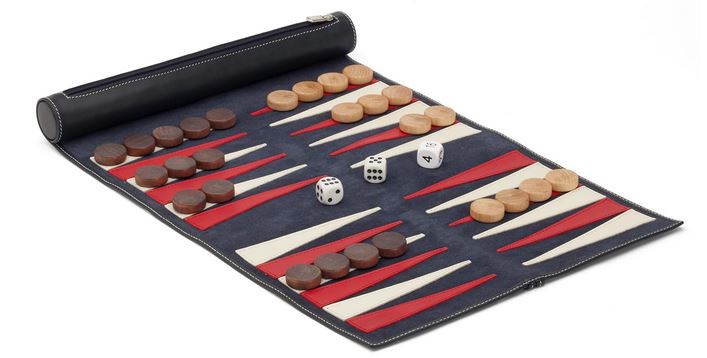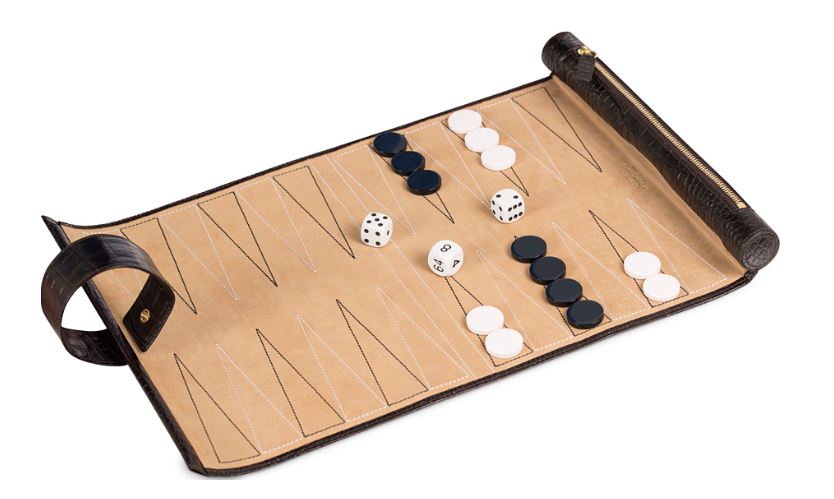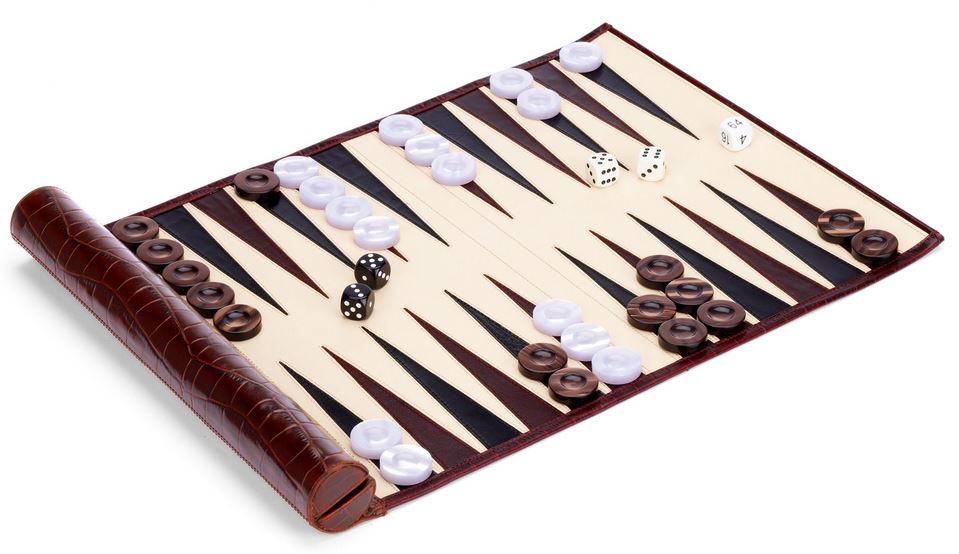Last updated on May 11, 2024
In this Deluxe Backgammon post for beginners, we look at 10 simple tips that will help you improve at backgammon.
Opening moves
Learn the correct opening moves for all possible dice rolls. There are fifteen possible dice combinations on the opening move. Computer analysis has shown that on five of these moves (3-1, 4-2, 6-1, 5-3, 6-5) there is only one move worth considering. For the other 10 rolls, there are preferred moves based on computer analysis with some closely drawn alternatives. All beginners should learn these moves and experiment with the alternatives to determine the moves that best match their playing style. After you have learnt the opening moves it is worthwhile exploring opening move strategy and the replies to the opening moves.
Backgammon opening moves, a simple list.
The 5 best opening rolls in backgammon.
Strategy and tactics
Understand the basic strategies and tactics and when and how to use them. There are five basic strategies:
The Blitz involves an all-out attack against your opponent, where you hit their checkers at every opportunity.
The back game is not a strategy of choice. This is a strategy designed to salvage a game when you have fallen behind.
The holding game strategy is employed because you have fallen behind your opponent in the pip count. The basic idea of the strategy is to keep a point under your control within your opponent’s board.
The priming game is a strategy that involves building a wall (a prime) with your checkers to block your opponent’s moves. Ideally, the prime is built inside your home board.
The running game strategy turns the game into a pure race where you attempt to bring all of your remaining checkers as quickly as possible into your home board and begin bearing off.
Key points
In the early stages of the game, focus on securing key points on both sides of the board. Key points include your 5-point, 4-point and bar-point, and your opponent’s 5-point and 4-point. The most important points are the 5-points on both sides of the board, it should be a priority to secure these points where possible. The 5-point is a home board point that forms a useful 2-prime with the 6-point, which provides a good base for a longer prime. Many beginners mistakenly believe the bar-point is the most important point because it forms a 3-prime with the 6 and 8-points. Always try to secure the 5 and 4-points before the bar-point.
Securing these key points should be part of a broader strategic plan. For example, these points can be used to build a 6-prime to trap your opponent in your home board. Better still, they could be used to close your home board (making all 6 points in your home board) to prevent your opponent from re-entering after they are sent to the bar. On the other side of the board, securing your opponent’s 5 or 4-point creates a useful advanced anchor. This gives you a safe landing point when re-entering and helps prevent your opponent from building an effective prime.
Hitting
Hit blots when you have the chance. As a rule of thumb, it is usually the right move, especially early in the game. However, understand that there are times to avoid hitting blots. For example, if you are ahead in the race and would prefer to break contact with your opponent (get all your checkers past their checkers) and bear off. Likewise, avoid hitting if you have loose blots in your own home board. Whatever potential gain you achieved from hitting could be offset if your opponent hits when re-entering.
Towers
Avoid building towers, it severely restricts your flexibility. It is better to have 2 or 3 checkers on many points than 6 or 7 checkers on a few points. A wider distribution of your checkers gives you more options for moving on subsequent rolls. Building towers is a common mistake by beginners due to the fear of being hit. Better players understand that winning at backgammon involves an element of risk.
Pip count
Learn to pip count. Most online or electronic games display the pip count. However, in live play, you have to count manually. It might appear daunting at first, but it is like any other skill, it can be learned with repeated practice. Pip counts allow you to determine your position in the race and therefore make strategic decisions to decide on the best way to win.
For example, the pip count can be used to help determine whether you should double or take a double. It could also, be used to determine if it is time to escape your back checkers or to hold your anchors. You can use the rule of 8 to determine how many rolls in front or behind you are.
The race
If you are significantly ahead in the race, break contact with your opponent and bear off. However, remember that luck plays a big part in backgammon and a series of high rolls by your opponent could see them quickly back in the race.
When you are behind in the race, keep an anchor in your opponent’s home board and focus on securing points in your home board while you wait for the chance to hit a blot and even the pip count.
Probability
Accept that risk is part of the game and use your knowledge of probability to take calculated chances. Luck is part of the game. However, a strong understanding of the dice mechanics and probability will outweigh luck in the long term. For example, sometimes you need to take chances by slotting a point, hoping to make it on a subsequent turn. However, you need to calculate the probability of securing the slotted point versus the possibility of getting hit.
Observe your opponent
Always consider what your opponent is doing on the other side of the board when making tactical or strategic decisions. For example, if your opponent is close to completing a prime, you may need to escape your back checkers immediately while you still have the chance. Another example would be where your opponent has closed out their home board. In this instance, you need to be extremely careful about leaving blots since you would not be able to re-enter.
Bearing off
When contact is broken (checkers can no longer be hit) bear off as many checkers as you can with your dice rolls. Ideally, you don’t want gaps in your home board. However, don’t shuffle a checker to fill a gap when you can bear off instead. If contact is still possible because your opponent has checkers in your home board or on the bar, care must be taken to avoid leaving blots. Try to keep an even number of checkers on your highest occupied points. This is to avoid being forced to leave a blot due to a high roll. For example, if your highest occupied point is the 4 and it has three checkers, a roll of 6-5 would force you to bear off two of those checkers, leaving a blot that can be hit.
Related content
How to win at backgammon at wikiHow.




The best backgammon tip I ever received was to learn dice probability . Ignore luck and play the numbers on every move. A of string good luck can cause one to play over confidently and recklessly, which will ultimately end in defeat. A string of bad luck can cause you to play too defensively and you leave a sting of towers across the board. Playing backgammon using probability will give you the best results in the long run.
Hi Geoff, great tip. Understanding dice probability is a crucial skill in backgammon. Ignoring the impact of luck is also and important part of improving your backgammon game. Thanks for the great tip, Jason